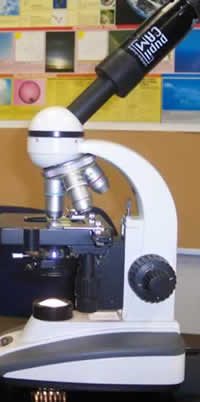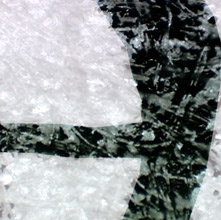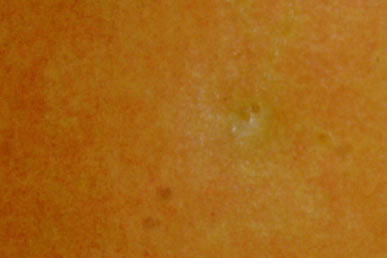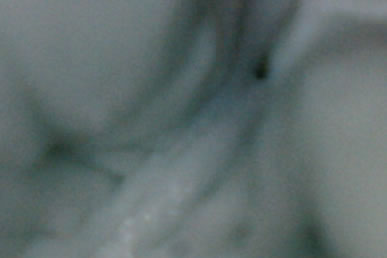Microscope Lab
Microscopy -
Teacher's Guide
SED 695B; Fall 2005
SED 695B; Fall 2005


Topics addressed
7. Scientific progress is made by asking meaningful questions and conducting careful investigations. As a basis for understanding this concept and addressing the content in the other three strands, students should develop their own questions and perform investigations. Students will:
a. Select and use appropriate tools and technology (including calculators, computers, balances, spring scales, microscopes, and binoculars) to perform tests, collect data, and display data.
This lab is designed as an introduction
to microscope use and microscopy for middle school students. We have
included two activities. One of them is an activity that uses slides
that the students create themselves using newsprint and the letter"e".
Getting the students comfortable with microscope usage is often the most
difficult part of this activity. It is very important that they understand
how to use the microscope and how it works. There is a diagram link below.
Have the students study this diagram so that they know the parts, which
objective to use. It is very important that the students don't focus
to close to the slide with the high power objective, as this can permanently
damage the lens.
Study Guide:
This activity should be done using the low power objective
1. This activity works best with newsprint.
2. With your scissors cut out the letter "e" from the newsprint.
3. Place it on the glass slide so it looks like (e).
4. Place a cover slip over the letters.
5. Using the low power objective focus on the letter. Make some general observations about
Questions:
1. Did the letter appear in the same orientation when viewed through the microscope as viewed without the microscope?
2. When you move the slide to the right what direction does it appear to move under the microscope?
3. What happened to the image when you switched objectives?




What are you looking at? Try your luck with the images. Guess what you are looking at then put your cursor on the image.
Apple
Orange
Finger tip
Paper
Cardboard
Gum
Shirt
References & Links:

